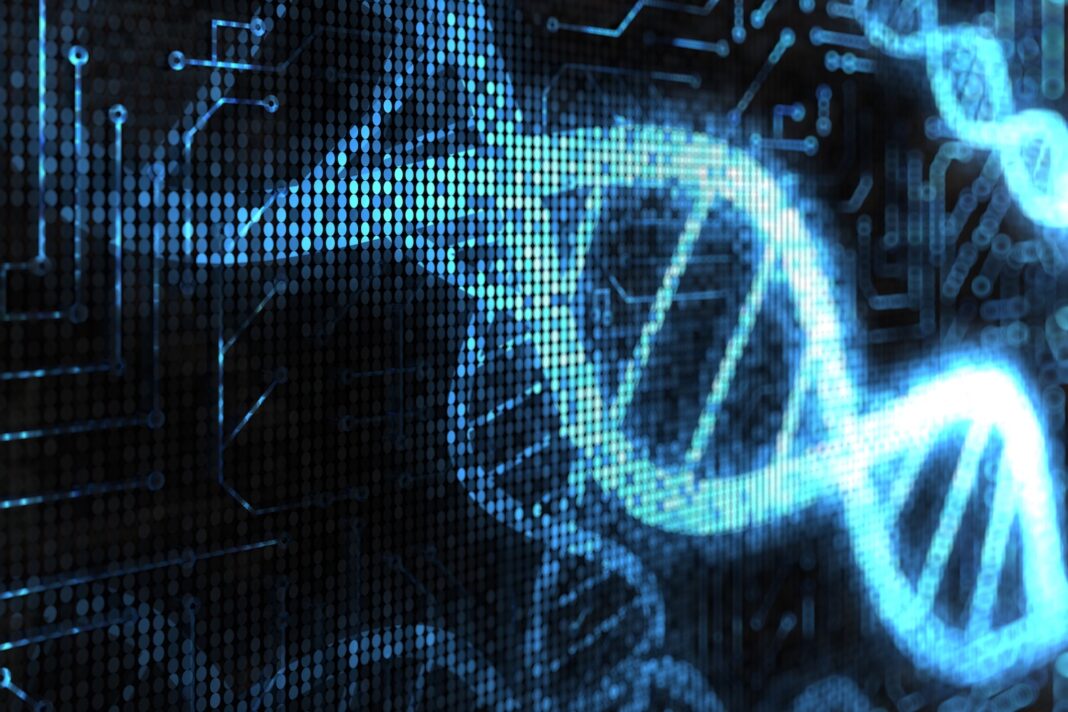Ground has been broken on developing “computers” made of DNA. Researchers from Shanghai Jiao Tong University in China demonstrated that they could build DNA integrated circuits (DICs) for general-purpose, meaning that the integrated circuits allow software programming and are not fixed to perform a certain function. These general-purpose DICs were shown to be capable of solving math problems and identifying molecular biomarkers, showing that these DNA computers might one day prove useful for clinical and diagnostic applications.
The peer-reviewed research article, “DNA-based programmable gate arrays for general-purpose DNA computing,” was published today in Nature.
General purpose DNA integrated circuits
Liquid-phase DNA circuitry has the potential for encoding and running algorithms in a very large number of parallel threads. Still, the development of general-purpose DICs has been largely ignored. Much research has been done on liquid-phase biocomputing, which uses biomolecular interactions and can work with biological systems. For example, DNA reaction networks with logic circuits, decision-making machines, and neural networks have been created. These have shown promise in molecular information processing, synthetic intelligent devices, and biomedical applications.
Instead of making custom hardware for each application, general-purpose electronic integrated circuits let you program software for a certain job. This gives you a higher-level platform for prototyping computing machines without having to know a lot about the physics behind them. Modern computers made of silicon, new computers made of carbon nanotubes, and quantum computers have all gone through the same change from being application-specific to being general-purpose.
In electronic integrated circuits, gates are physically located, and universal electrical signals are sent directionally. However, biomolecular components in DICs spread out and mix in solution, which makes it harder to make biocomputing devices that can be scaled up and programmed.
One of the most important steps forward in the history of electronic integrated circuits was the creation of field-programmable gate arrays (FPGAs), semiconductor devices that allow integrated circuits to be changed after manufacturing. The logic blocks in an FPGA are set up in a grid and connected by customizable routing paths. Programming the FPGA to work in a certain way lets the user build custom circuits in a way that is similar to using software.
Researchers led by Fei Wang, PhD, and Chunhai Fan, PhD, were inspired by silicon-based FPGAs to create DNA-based programmable gate arrays (DPGAs) that are very scalable. These DPGAs were made from single-stranded DNA (ssDNA) oligonucleotides and DNA origami floating around in a tube. The ssDNA worked much like electrons or photons do in integrated circuits, and the DNA origami served as registers to store bits of data used as inputs for calculations or other operations.
To demonstrate a real-world application of DICs, they reconfigured and programmed multilayer DPGAs to develop a quadratic equation-solving DIC, and, to show clinical and diagnostic relevance of DICs, the researchers addressed a problem central to the use of molecular circuits for the identification of disease-associated biomarkers. To do so, they created a nonlinear classifier, which is necessary for functions like decision trees and clustering. They showed that their system could distinguish between healthy and diseased samples, correctly identifying all 23 samples tested in around two hours.
So, will your next computer be made of DNA? Probably not. But the authors anticipate that integrated DPGAs will be able to process information from biomarkers beyond miRNAs in the near future.



